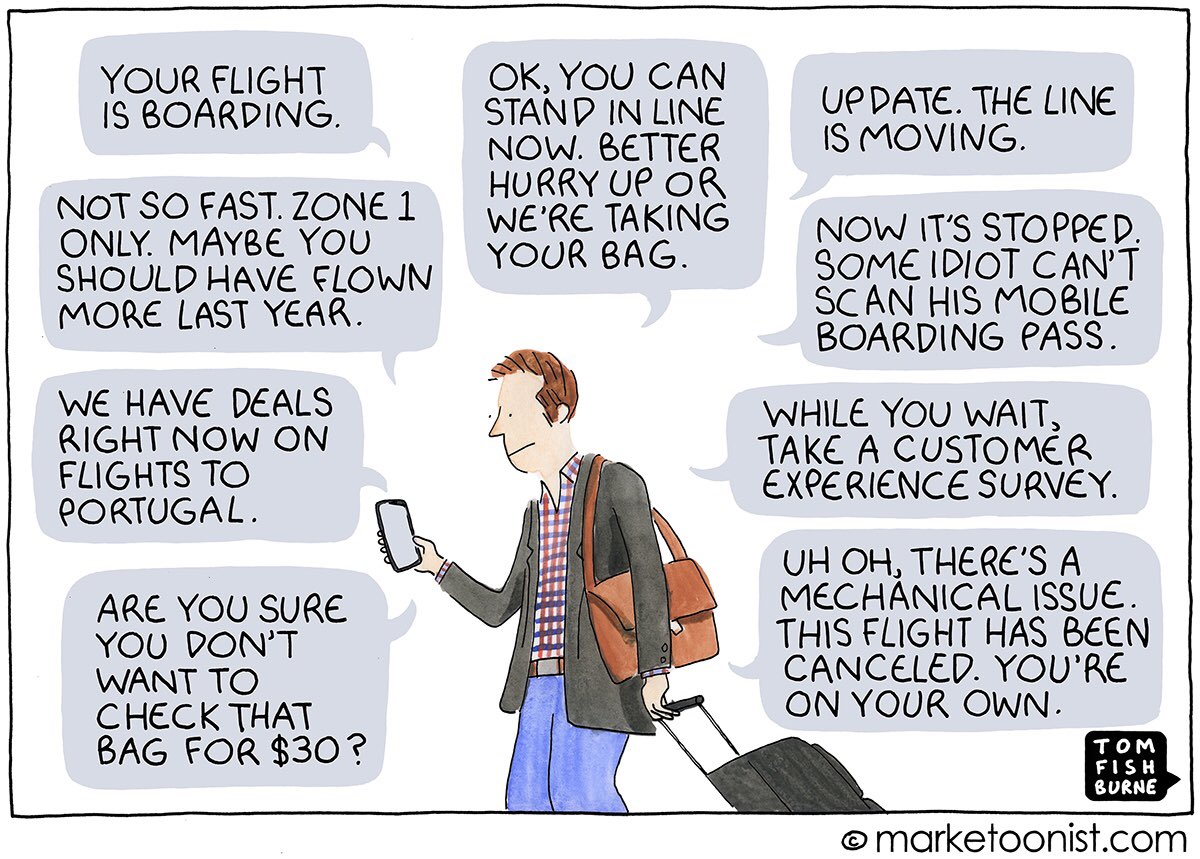Product design vs UX design are similar, yet fundamentally different. That said, it’s not simple to understand where one job ends and the other begins at first.
You’ll hear people use the terms interchangeably. You’ll see job descriptions that look like a copy-paste of each other. Knowing the difference means you’ll:
- Build better products
- Create more efficient teams
- Serve your customers in a way that actually solves their problems
- Grow your business
Understanding the difference between product design and UX design isn’t just semantics, it’s a huge strategic advantage. When you clearly define these roles, you set your projects up for smoother execution, stronger collaboration, and ultimately, better user outcomes.
Product vs. UX Design at a Glance: Quick Comparison
It’ll help to know what to expect with either option before moving forward:
| Factor | Product Design | User Experience (UX) Design |
|---|---|---|
| Primary Goal | Align user needs with business goals to create a viable, valuable product. | Make a product easy and enjoyable for a user to interact with. |
| Scope | The entire product lifecycle, from concept and strategy to launch and iteration. | The user’s journey and interaction with the product. |
| Key Question | What should we build and why does it matter? | How can we make this specific interaction easier for the user? |
| Main Collaborators | Product Managers, Engineers, Marketing, Leadership. | UI Designers, User Researchers, Developers. |
| Core Deliverables | Product roadmaps, feature specifications, market analysis, high-level prototypes. | Wireframes, user flows, usability test reports, interactive prototypes. |
| Metrics for Success | Market share, revenue, customer lifetime value, adoption rates. | Task success rate, user satisfaction (CSAT), time on task, conversion rates. |
What Is Product Design?
Product design involves the final look and feel of an app or a website, but there’s more to it than that. It oversees the entire process of creating and improving a product that customers will love and that works for the business.
At Influize, we offer design services that oversee the entire process of creating and improving products that customers love and that benefit the entire business.
Essentially, product designers are involved from the moment an idea is just scribbled on a napkin to long after it has launched.
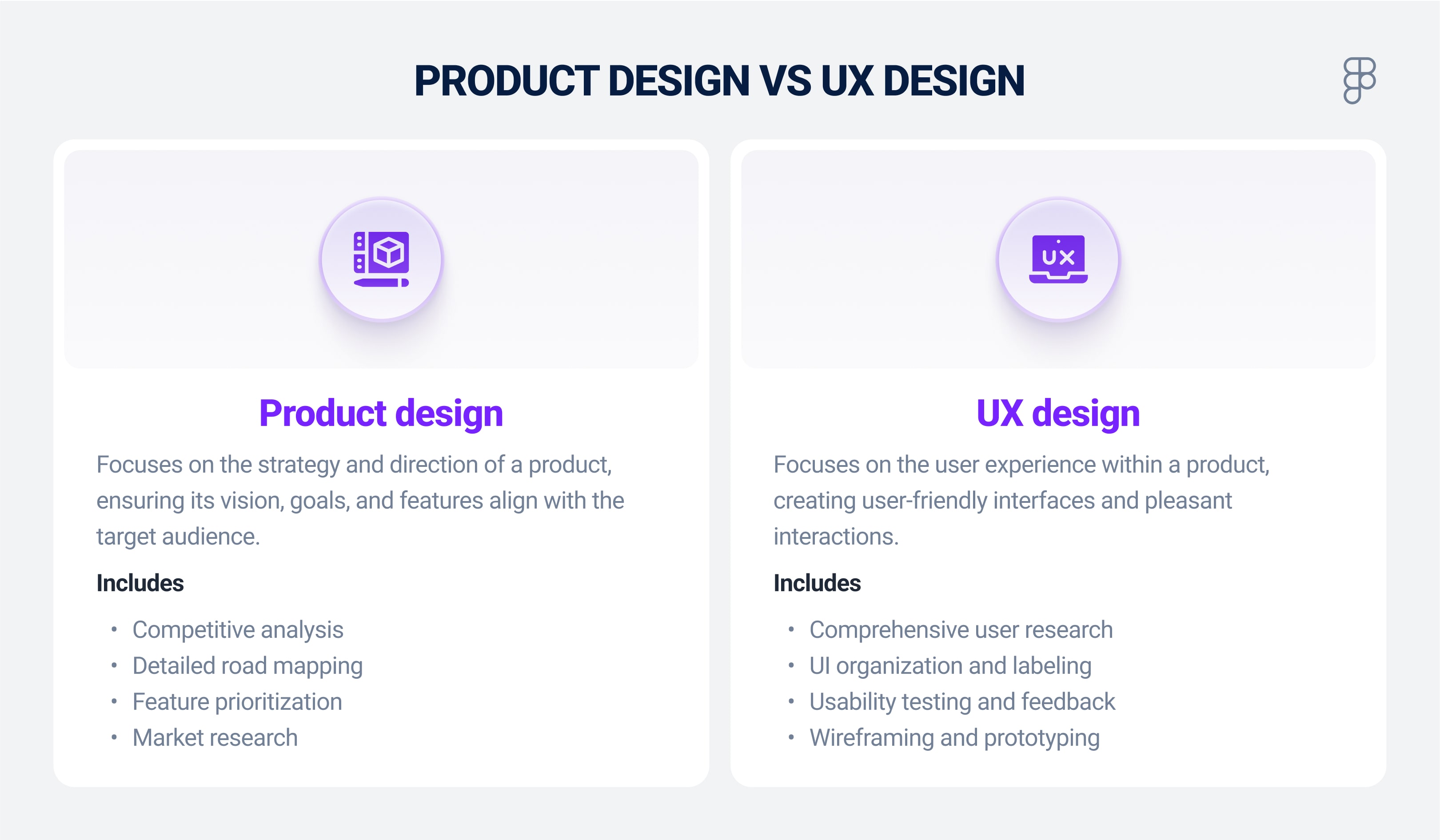
A Strategic Role From Concept to Launch
A Product Designer’s job starts with a fundamental question: “What problem are we trying to solve?” They don’t just take orders for features. They’re trying to understand the market and the user’s core pain points.
If the initial request is “build a budgeting feature,” A purely execution-focused team might have just started designing screens. Any good Product Designer pushes back at this stage, asking questions like:
- Why do our users need another budgeting tool?
- What are the existing solutions failing to do?
That might reveal that your target users aren’t bad at budgeting; they might just be overwhelmed by financial anxiety.
That project could shift from building a simple tracker to creating a tool that offered gentle nudges and positive reinforcement.
Combines User Needs With Business Goals
Great products make users happy, but must also be viable for the business. Product Designers are masters of this. They have to think about things like:
- How will this feature generate revenue or increase user retention?
- What is the technical feasibility of this idea?
- Can our engineers build it?
Spotify, for instance, has a freemium model because its users want free music. But Spotify still needs to pay artists and make money.
The product design solution is that free users get access to the full library but have to listen to ads and have limited skips. It’s just “annoying” enough to nudge you towards a paid subscription.
So that adds to the massive revenue stream while still providing some value to free users. This is more of a product design decision than a business decision.
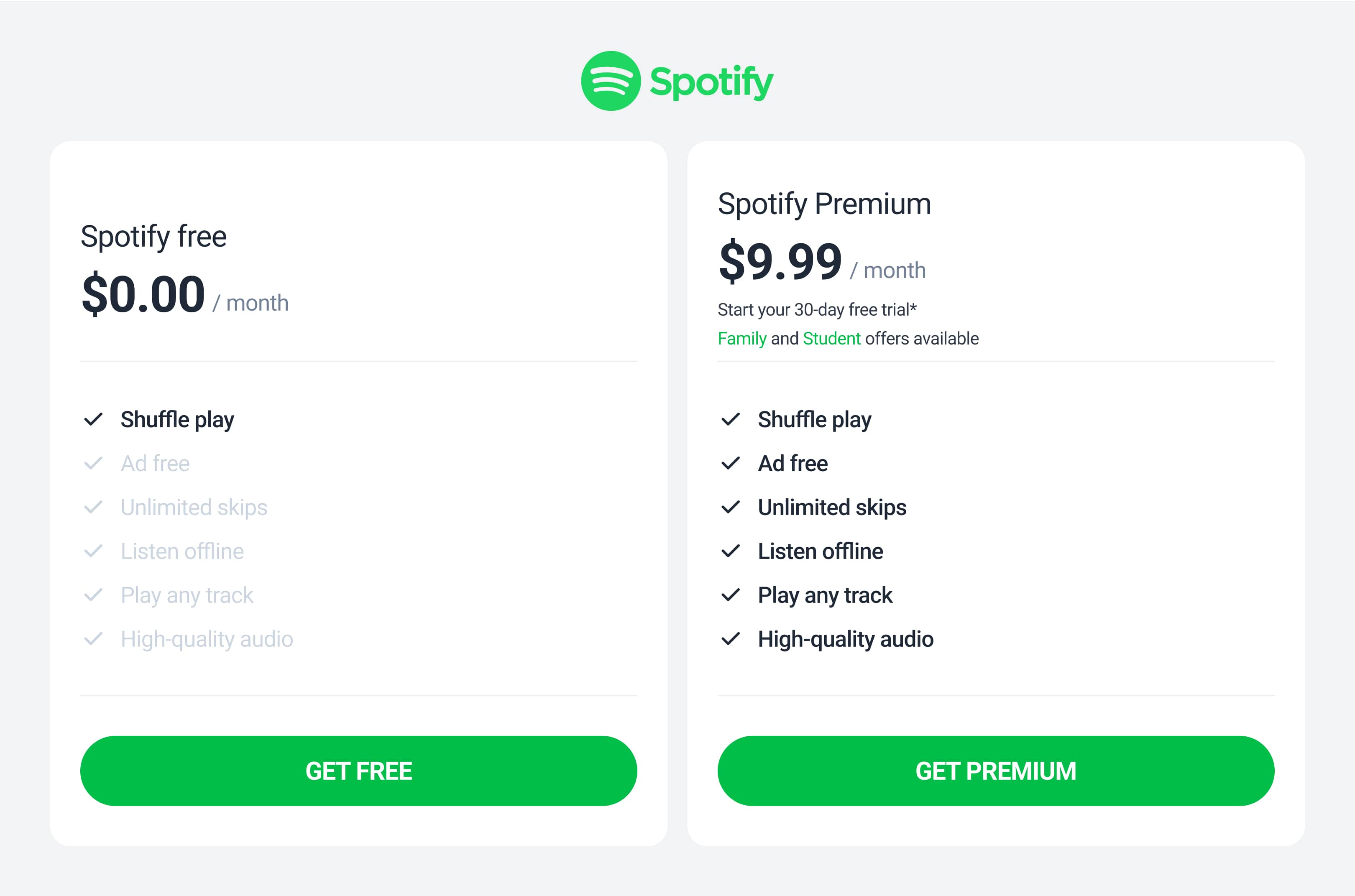
Works Closely With Product Managers and Engineers
Product Designers connect:
- The “what” (Product Manager)
- The “how” (Designer)
- The “can we” (Engineer)
With Product Managers (PMs): Even though the PM owns the roadmap and sets priorities, Product Designers have the user and market context to inform those priorities.
With Engineers: They work together throughout the entire process to see what technical constraints there could be. They don’t just hand off a finished design.
Often Leads Feature Prioritization and Trade-Offs
Product Designers are invaluable in deciding what to build next because they have a holistic view of the user and the technology. They use frameworks like RICE (Reach, Impact, Confidence, Effort), so their decisions aren’t just guesses.
They also ensure that the team doesn’t just build the easiest or shiniest new toy but the thing that will deliver the most value.
Tools and Deliverables
A Product Designer’s toolkit is broad because their role is broad. You’ll often find them using:
- Miro or FigJam: For brainstorming and strategy sessions.
- Productboard or Aha!: For building and managing product roadmaps.
- Figma or Sketch: For creating everything from low-fidelity concepts to high-fidelity prototypes that can be used to sell an idea to stakeholders or test a concept with users.
- Dovetail or EnjoyHQ: For synthesizing user research and identifying patterns.
Their deliverables are more strategic in nature, including things like competitive analysis documents and prototypes that demonstrate a whole user journey, not just a single screen.
What Is UX Design?
Product Designers make the product, User Experience (UX) Designers help you find your way around easily and ensure it’s usable. Their world is focused entirely on the user’s interaction with the product.
The official definition from Nielsen Norman Group, a leader in the field, is that UX “encompasses all aspects of the end-user’s interaction with the company, its services, and its products.” The key words here are interaction and end-user.
A Role Focused on Usability and Flow
A UX Designer’s main concern is making a product usable and useful. Every time you’ve seamlessly signed up for a service or completed a complex task in an app without even thinking about it, you have a UX designer to thank.
They deal with questions like:
- Is the navigation clear and logical?
- Can a user complete their goal with the minimum number of clicks?
- Is the language we’re using on this button confusing?
- Does this process feel frustrating or empowering?
Starts With User Research and Testing
UX Design is not based on opinions or guesses. It’s a research-driven discipline. They’re deep in that discovery phase before any kind of work starts. This means they’re performing:
- User Interviews: To understand user motivations and pain points.
- Surveys: To gather quantitative data about user attitudes.
- Usability Testing: To watch real users interact with a prototype or a live product to see where they struggle.
A famous study by Forrester Research found that every dollar a company invests in UX yields an average of $100 return, or an ROI of 9,900%. This is no surprise, really, because good UX directly impacts business metrics.
- Better usability → higher conversion rates
- A more satisfying experience → better customer retention
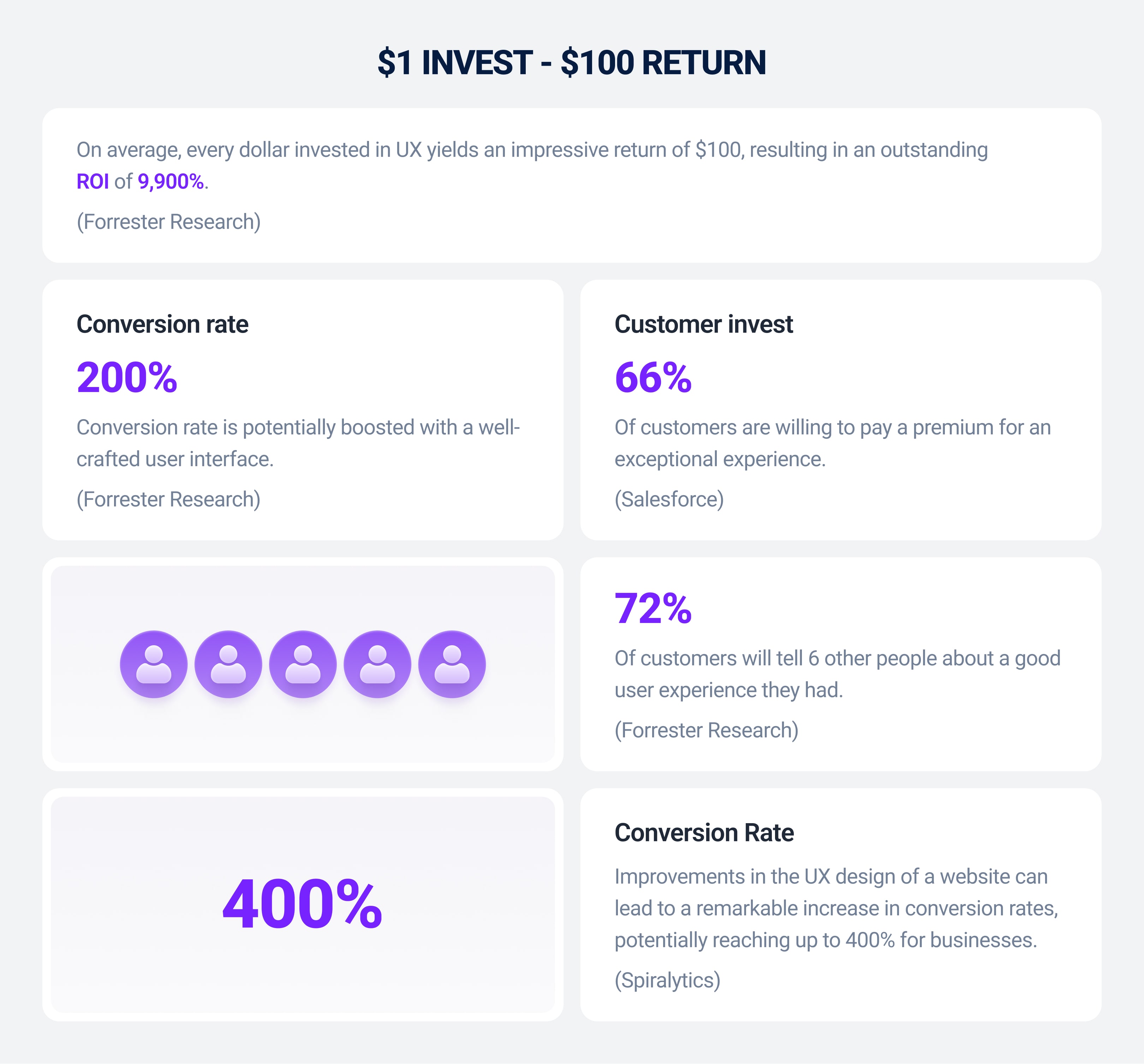
Improves Task Completion and Satisfaction
The UX designer’s main responsibility is to ensure users can do what they came to do, like Amazon’s “1-Click” ordering. The most annoying part of online shopping is filling out shipping and payment info every time, so they eliminated it.
They prototyped and tested a solution that was so effective they were able to patent it. That’s a UX improvement worth billions of dollars as it’s reduced cart abandonment and made purchasing completely seamless.
Works Closely With UI Designers and Researchers
While a UX designer can be a generalist, they often work in a focused team:
- With User Researchers: Researchers do the interviews and tests then send that raw data and insights to the UX designer who turns it into design solutions.
With UI (User Interface) Designers: The UX designer creates the blueprint (the wireframes and user flows that dictate how the product works).
The UI designer then takes that blueprint and adds the visual layer (the colors and typography that make it pop).
Tools and Deliverables
All the tools UX Designers use are focused on mapping out and testing user interactions. So this includes:
- Figma or Sketch: The industry standards for creating user flows and interactive prototypes.
- Maze or UserTesting.com: Platforms for running remote usability tests on prototypes to get quick feedback.
- Optimal Workshop: A suite of tools for things like card sorting (to figure out navigation) and tree testing.
Their key deliverables are the artifacts that map the user’s experience:
- User personas
- Journey maps
- Flow diagrams
- Low-to-high fidelity wireframes
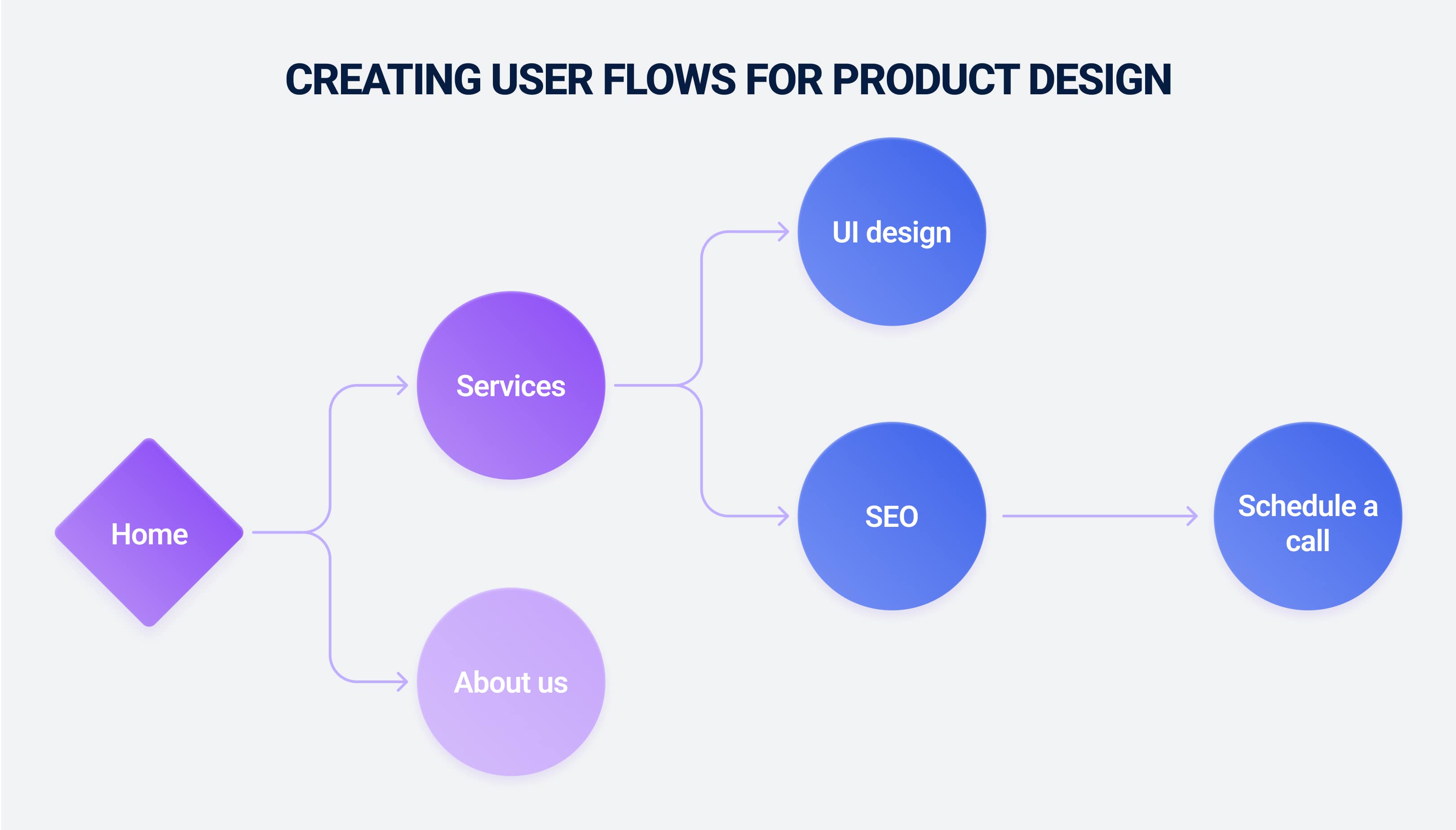
Who Owns the Product Roadmap?
The Product Manager is the one who usually owns the product roadmap and is responsible for:
- Setting the direction
- Defining the timeline
- Communicating the plan to stakeholders
That said, the Product Manager builds their roadmap based on heavy input from the Product Designer. The Product Designer provides the “why” behind the “what.”
They bring the user research and market analysis that justify prioritizing one feature over another.
WE ARE A REVENUE-GENERATING UI/UX & WEB DESIGN AGENCY
Your website is your first impression. With functional design, clean code, and seamless UX, we build high-converting websites.
Let's talk - Schedule a call with our expert team today to see how we can help!
Key Differences Between Product and UX Design
The roles are collaborative, but their focus and goals are different from one another:
Scope: Full Product Vision vs Specific Interaction Flow
The most significant difference is scope. A Product Designer thinks about the entire product ecosystem. They worry about things like pricing models and how the product will evolve over the next three years. Their scope is macro.
A UX Designer, on the other hand, is focused on a specific user’s journey within that product. They worry about:
- Whether the sign-up form is too long
- If the iconography is clear
- If the user can successfully complete their task
Their scope is micro.
Goals: Business Outcomes vs User Experience
A Product Designer is ultimately judged on business outcomes. Did the new product gain market share? Did it increase revenue? Did it reduce churn? They must translate good design into measurable business success.
A UX Designer is judged on user-centric metrics. Did the redesign of the checkout flow increase the conversion rate? Did user satisfaction scores go up after the new feature launch? Did it reduce the number of support tickets related to a specific task?
These user metrics drive business outcomes (as we demonstrated earlier, but the UXer primarily focuses on user experience. This is one of the main factors you’ve got to consider regarding the app design cost, as investing in UX has a clear, demonstrable ROI.
Prioritization: Features vs User Needs
When prioritizing the roadmap, a product designer has to weigh the business impact of any given feature against its development cost (and whether it’s strategic).
But when a UX Designer prioritizes their work, they focus more on the most significant user pain points. So here they might argue that fixing a confusing and frustrating part of the existing experience is more important than building a brand-new feature because it directly addresses a user’s need.
Collaboration Style: Cross-Functional vs Research-Driven
Product Designers constantly collaborate horizontally across the entire organization. That includes marketing (especially social media marketing) on the go-to-market strategy, sales on customer feedback, and leadership on the overall vision.
UX Designers also collaborate a lot, but in a more focused way. Their most crucial relationship is just with the users they’re designing for. Again, it’s that continuous cycle of:
- Research
- Design
- Testing
- Iteration
And that’s all done in close partnership with UI designers and developers who bring their vision to life.
Decision Impact: Roadmap-Level vs Screen-Level
A Product Designer's decision can change the direction of the entire product. They could decide to pivot to a new target market entirely or eliminate a product line that isn’t performing.
Any decision a UX Designer makes is much more immediate and contained. So, for example, changing the layout of a screen or rewriting the copy on a button is much less major.
How Product Design vs UX Design Roles Collaborate
Any successful tech company builds a culture where these two roles work in a collaborative loop. Not one where they’re fighting for control.
Product Designers Define What Gets Built
Product Designers (in collaboration with the PM) usually start with identifying a problem or opportunity; something like “Our data shows that users are not engaging with our new collaboration feature. We believe that if we can increase engagement, we can improve team retention, which is a key business goal.” They define the “what” and the “why.”
UX Designers Define How It Feels and Functions
The UX Designer then takes that problem statement and dives deep. They have to think, “Why aren't users engaging?” They’ll then:
- Conduct research
- Talk to users
- Analyze the existing flow
They might then discover that the controls are too confusing or it doesn’t solve the problem users thought it would.
Based on this research, they design the solution. They create the prototypes and user flows that show exactly how the improved feature will work and feel. They own the “how” part of things.
And complementing UX design with targeted email marketing campaigns can further improve engagement and user retention,
Feedback Loops From Research to Product Planning
This isn’t a one-way handoff. Any insights the UX Designer finds during their research phase are pure gold for the Product Designer. For example, the UX research might reveal that the core problem isn’t the feature’s design but that it’s targeting the wrong type of team.
Then that insight goes directly back into the product strategy, where the Product Designer can adjust the roadmap or even pivot the product’s direction.
Shared Tools, But Different Questions to Answer
Both roles will likely spend a lot of time in a tool like Figma. But they use it differently.
- Product Designers usually use Figma to make a quick mock up of a concept to show stakeholders.
- UX Designers will use Figma to create something much more detailed. This could be an interactive prototype with every screen and interaction mapped so it’s ready for usability testing.
One answers, “Should we build this?” and the other answers, “How should this work?”
Example: Launching a New Checkout Flow
Say a company sees their cart abandonment rate is around 70%, which is high even for their industry.
Product Designer’s Role: They’re working with the PM and can tell this is a major business problem that’s costing the company revenue. They set a goal: “Reduce cart abandonment by 15% in the next quarter.”
Now they see what competitors are doing and get alignment from leadership to make this a top priority.
UX Designer’s Role: Now the UX Designer gets involved by analyzing session recordings to see where the users are actually dropping off. They might do a few user interviews to understand why people are dropping off.
Maybe users are surprised by shipping costs or don’t trust the site with their credit card info.
- The Collaboration: The UX Designer then makes a prototype of a new checkout flow that’s simpler and addresses these issues. It could be by showing shipping costs upfront and adding trust seals. That then gets tested with real users.
The Feedback Loop: The UX Designer presents their findings: “Our prototype tested extremely well. Users completed the purchase 30% faster and their confidence scores were much higher.”
This data gives the Product Designer and PM the confidence to allocate engineering resources to build the new flow. The team launches it and monitors the results, which starts the cycle all over again.
How to Decide Between Product Design and UX Design
So, who do you turn to when your company needs a design? The answer might be to outsource graphic design and UX/product work to an agency with experts in all these areas.
That could be a bit expensive, though, so do this if you’re just planning to hire internally:

Choose Product Design for New Builds
If you are building a brand-new product from scratch or launching a major new initiative, you need a Product Designer. They will help you answer the most fundamental questions: Who is our customer? What problem are we solving? How will we make money? They will define the product vision and strategy before a line of code is written.
Choose Product Design for Business Alignment
Product Designer is the bridge you need if you feel there’s a disconnect between:
- What your users want
- What your business needs
- What your tech team can build
They’re good at working between these different fields and getting everything aligned. They help connect your product’s features to measurable business outcomes.
Choose UX Design for Optimizing Existing Features
A UX Designer is your specialist if you have an existing product but a specific part is underperforming or causing frustration.
They can explore that one feature and see what the usability problems are. That also gives them a chance to make a targeted solution. You’ve got a UX problem if users complain that a feature is “confusing” or ”clunky.”
Choose UX Design for Conversion or Engagement Issues
If you’re seeing a sudden drop-off at a specific point in your user journey (like on the payment screen or during onboarding), you need a UX Designer. Their job is to spot and remove anything that kills conversion and engagement.
Often, UX improvements pair well with strong SEO strategies, as it ensures your improved user experience reaches the widest audience.
They will use data and testing to find the exact point of the problem and iterate on solutions until the metrics improve. This is where you need to choose a web design company or a designer who has proven experience in conversion rate optimization.
Final Takeaways
So, the main difference between the two is primarily in scope and focus. Product Design is about the ‘what’ and the ‘why’. It’s the strategic discipline of deciding what to build to solve a user problem in a viable way for the business.
UX Design is about the ‘how’. It’s the craft of making sure that what gets built is intuitive and actually enjoyable for the person using it.
They aren’t competing roles. The best teams are those where they work together and have that loop of business strategy informing user experience, and user research informing business strategy.
Frequently Asked Questions
Do Product Designers Also Handle User Experience Tasks?
Yes, but usually just in smaller companies or startups. Any good Product Designer knows about basic UX principles because you can’t design a successful product strategy without understanding the user’s experience. However, their focus is a lot broader and they usually don’t go as deep into the granular interaction design and testing as a dedicated UX Designer would.
Is UX Design a Subset of Product Design?
You could think of it that way. Product Design is a broad umbrella term that encompasses the entire product lifecycle. So this includes everything from strategy and market fit to business goals. UX Design is just one part of that and is focused entirely on the user’s interaction with the product.
Which Role Drives Business Strategy More Product Design or UX Design?
Product Design is unequivocally more focused on business strategy. While a UX Designer’s work has a massive impact on the business, their primary lens is the user. A Product Designer is mainly thinking about things like how user needs and business viability intersect.
How Do the Responsibilities of UX and Product Designers Overlap?
The biggest area of overlap is between user research and prototyping because both roles need to understand the user. Both often use tools like Figma to visualize solutions. The key difference is the purpose. A Product Designer researches to validate a business opportunity, while a UX Designer researches to validate a design solution.
Which Tools Are Commonly Used in UX vs. Product Design?
They share many tools like Figma and Sketch. However, Product Designers are more likely to use roadmapping tools like Productboard or Aha! And strategy tools like Miro. UX Designers will spend more time in specialized testing platforms like Maze or UserTesting.com and research tools like Optimal Workshop.
Is Product Design More Focused on the Full Lifecycle of a Product?
Yes, absolutely. A UX Designer’s involvement is usually intense during a specific feature build or redesign. But a Product Designer is engaged from the initial concept phase through launch and into the long-term iteration and evolution of the product. They’ve even got to consider its eventual retirement.
Can a UX Designer Transition Into a Product Design Role?
Yes, it’s a very common and natural career path. A UX Designer looking to make the move must build up their “business acumen.” This means learning to think more about market analysis and stakeholder management. They need to move from focusing solely on the user to balancing the needs of the user and the business.
Which Career Path Offers Broader Responsibilities?
Product Design has a much broader set of responsibilities because it’s a role that touches on both business strategy and user experience. It’s great for anyone who likes thinking about the big picture and connecting all the dots between different parts of a business to create a single product.


